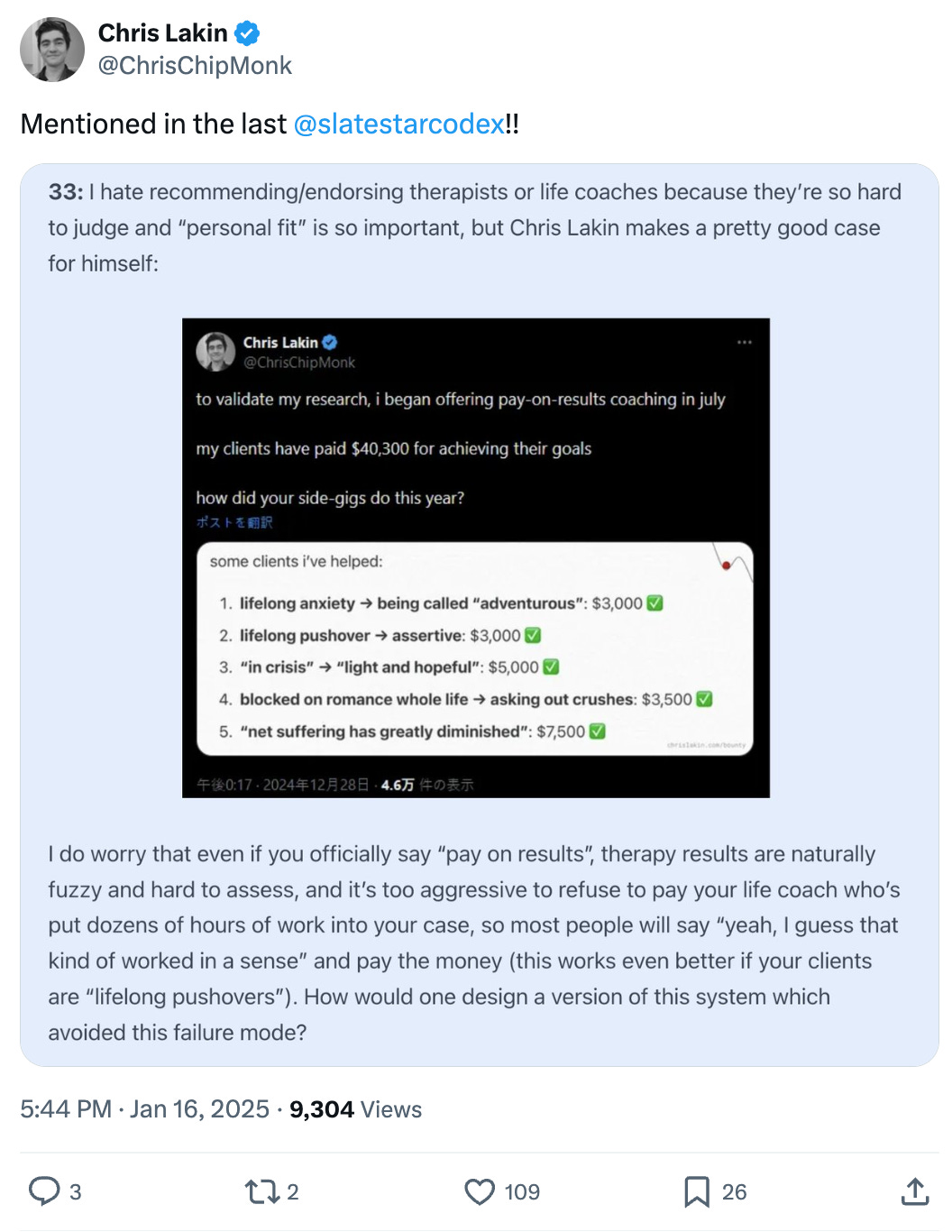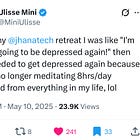Most coaches charge hourly. This makes sense: predictable income, easy scheduling, matches industry norms. But charging for results (“bounties”) creates different incentives that are often be better.
When coaches charge hourly, more sessions = more revenue regardless of progress. With bounties, coaches are incentivized to:
Accurately predict who they can and can’t help
Develop 10x faster methods1
Refer specific cases to better-suited practitioners
Bounties provide stronger evidence for effectiveness. Many coaching reviews make vague claims like "it was transformative!" or "had a breakthrough" - which could also just be politeness. But when someone pays a significant fraction of their net worth long after the work, that's stronger evidence something valuable happened.
I've been testing this model since July 2024 with $40,300 of results banked.
The bounty model seems particularly well-suited for unlearning rather than skill-building. The most successful cases involve removing emotional blocks like anxiety, insecurity, suffering (example). Traditional hourly rates are probably better for gradual skill development needing sustained practice and feedback.
This focus on resolving discrete issues differs from coaching that involves weekly check-ins and ongoing support. That approach makes sense for many goals, but for unblocking, I think bounties create better alignment.
In my practice, I focus on the hardest cases. People who have failed to resolve their issue with years of therapy, coaching, meditation, etc. So when someone quickly resolves a lifelong after working with me or my collaborators, the causality is clear.
What determines the payout of a bounty? Satisfaction. (Not concrete milestones!) They decide if and when to pay (if ever). This has worked well.
One might worry that bounties could incentivize practitioners to rush or oversell, but don’t these risks exist with hourly rates too?
Even hourly practitioners could experiment with adding bounties: “If you completely resolved your issue, how much would you happily pay?” This creates skin in the game for results while maintaining the cashflow of hourly rates.
Thanks to Stag Lynn, Brian Toomey, Kaj Sotala, Anna Salmon, Damon Sasi, Ethan Kuntz, Alex Zhu, Ruby, and others for help.
In theory, coaches who help clients 10x faster could earn more through volume and reputation even with hourly rates. In practice, clients rarely believe such dramatic claims based on testimonials.








